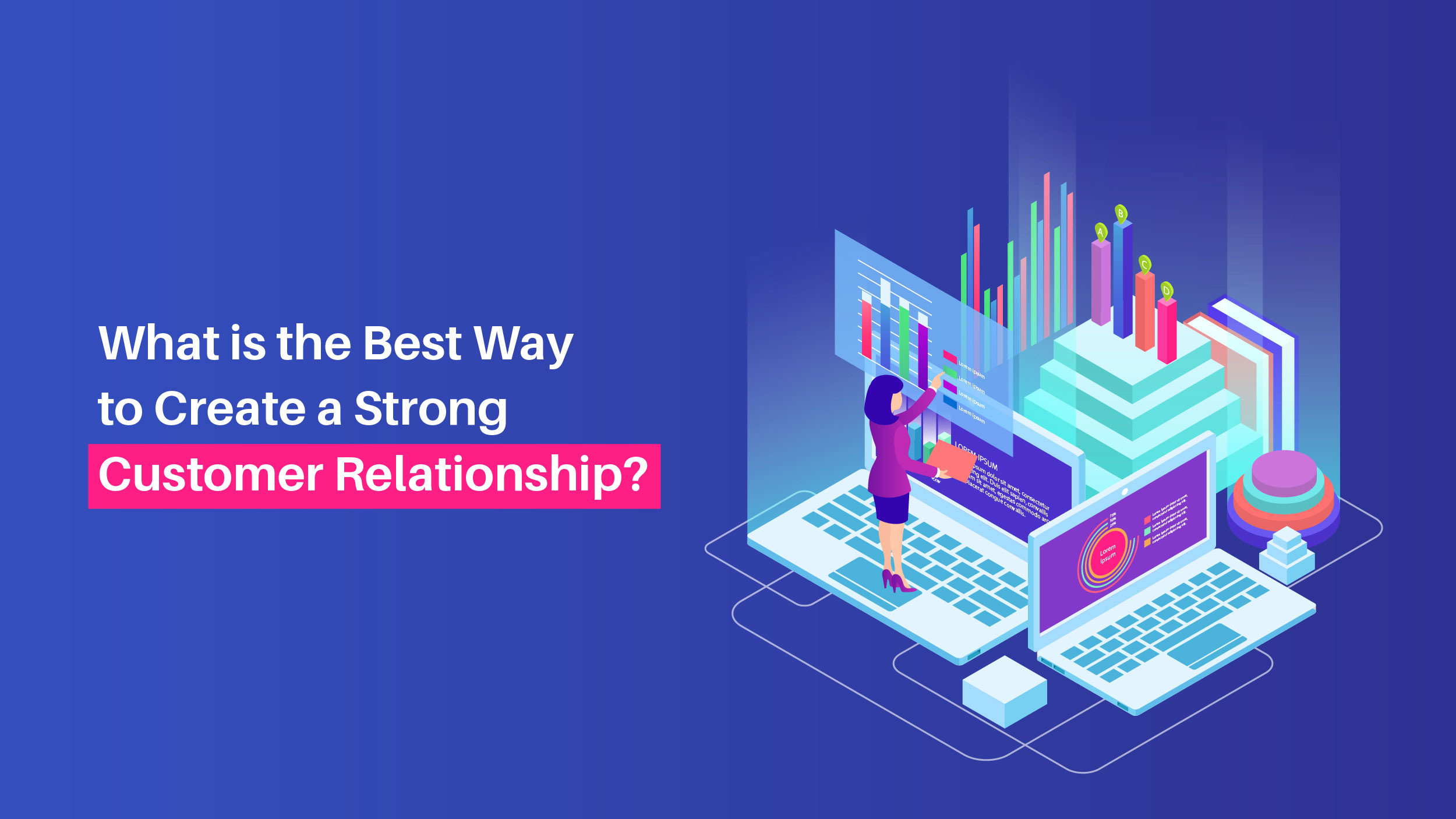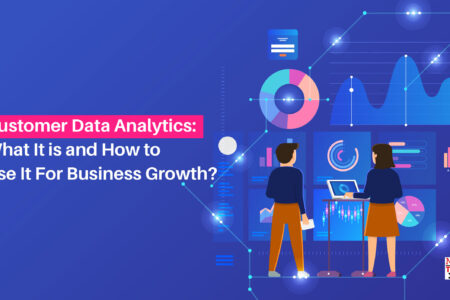For any business, the number one thing needed for success, apart from the product or service, is customers. No matter the size of your client pool, without proper information, it will be hard to turn them into profits.
Quick answer? Customer data analytics.
With advanced technologies like big data, artificial intelligence, and machine learning, learning about your target audience shouldn’t be hard.
The good news is, this article will explore various methods to achieve that goal.
What is Customer Data Analytics?
Customer data analytics or customer analytics involves collecting and examining customer data to understand their behavior, preferences, and needs. This process uses data from various sources such as customer interactions, social media profiles, review websites, marketing tools, and CRM systems..
Customer data analytics helps organizations interpret their collected data and identify trends, often presented in charts and graphs. This allows businesses to make data-driven decisions that enhance customer satisfaction and drive growth.
Why is Customer Data Analytics Important For Business Growth?
Customers have instant access to information about where to find goods and services, what to buy, and how much to pay. They can easily find the perfect products to meet their needs. Therefore, organizations must deliver the right products and marketing campaigns to their audience.
Customer data analytics is increasingly important because:
- Identifying Shortcomings and Opportunities: Customer behavior analysis helps companies to pinpoint their weaknesses and opportunities.
- Efficient Interaction: When consumers have access to comprehensive information about where to buy, what to buy, and how to pay, understanding their preferences allows companies to interact more effectively.
- Designing Profitable Products and Services: Precise knowledge of customers’ buying patterns and preferences aids in designing future products and services that will be profitable.
- Holistic Customer Viewpoint: 360-degree data analytics provides a complete view of customers, helping companies design effective marketing and sales strategies to attract new customers.
- Enhancing Customer Satisfaction: Customer satisfaction is key to retention. Predictive analytics helps develop innovative techniques to improve customer satisfaction.
- Increasing Customer Loyalty and ROI: Well-executed customer analysis enhances customer loyalty, boosting return on investment (ROI).
- Cost-Effective Campaigns: Accurate customer analytics allows companies to target the right customers at the right time, reducing campaign costs.
What is the Best Way to Create a Strong Customer Relationship?

Instead of striving to create the perfect customer relationship, focus on managing the relationship in a way that fosters positive feelings for both parties.
What you need is a program that predicts how and when to meet your customers’ needs. To achieve this, you must understand their preferences, behavior, and attitudes.
Once you have this information, apply it across your organization, including sales, marketing, and customer service. This approach creates a customer-centric culture. Use customer data analytics to support this effort and keep your customers at the forefront of everything you do.
Below figure shows how the customer analytics cycle works.
How Can Customer Data Analytics Improve Marketing Strategies?
Here are some key ways it can improve marketing efforts:
- Data-Driven Decision Making: Customer data analytics empowers marketers to make informed decisions based on concrete data by analyzing customer data, they can identify trends, patterns, and correlations.
- Targeted Marketing Campaigns: By understanding demographics, preferences, and purchase history, marketers can tailor messages and offers to specific customer segmentation, boosting the effectiveness of their efforts.
- Personalization: Analytics allows marketers to deliver personalized experiences. This personalization enhances customer engagement, loyalty, and satisfaction.
- Improved Customer Experience: Insights from customer analytics help marketers identify pain points and areas for improvement in the customer journey. Addressing these issues enhances the overall customer experience and strengthens customer relationships.
- Measurement and Optimization: By analyzing campaign data, they can determine what works and what doesn’t, allowing for continuous optimization of their marketing strategies.
- Predictive Analytics: Marketers can use old data and advanced analytics to predict customer preferences, buying patterns, and market trends, keeping them ahead of the competition.
Also Read: AI Powered Analytics: Turning Data Into Dollars, Insights Into Impact
How Does Customer Data Analytics Work?
Customer analytics is typically overseen by an interdisciplinary team comprising leaders from marketing, sales, customer service, IT, and business analysis. For meaningful insights, this team must agree on business metrics that comprehensively reflect the customer experience.
Customer data analytics works via three main stages: collection, organization, and analysis.
Collection:
Organizations gather raw customer data from various sources, such as marketing tools, CRM systems, and third-party sources. This data can include:
- Demographics
- Purchase history
- Web and social media activity
- Contact center interactions
- Advertisement engagements
- Survey responses
Organization:
The collected data must be properly formatted to work within a customer analytics tool. Disorganized data can lead to inaccurate customer profiles.
Issues like multiple CRM instances, disparate enterprise resource planning systems, or poor data integration can cause errors. A customer data platform (CDP) can centralize and organize this data effectively.
Analysis:
Customer analytics tools help organizations interpret the collected data, displaying trends in charts and graphs. This analysis transforms raw data into intelligent business decisions.
Restrictions on Cookies to Impact Customer Data Collection?
One of the major ways marketers collected customer data analytics were through- cookies. There are two types of cookies – first party and third party.
First-party cookies improve the website experience by, for example, remembering items in a shopping cart.
Third-party cookies, from external sites, are controversial as they track users across multiple sites for personalized ads.
Google’s plan to phase out third-party cookies by 2024 poses a challenge for marketers who now need alternative ways to gather customer data.
Below are top seven ways businesses can take proactive steps in the absence of third party cookies:
- Use first-party data: Investing in Customer Data Platforms (CDPs) and analytics tools can transform data collected from various sources into valuable marketing insights.
- Collect zero-party data: Utilize methods like online quizzes, social media polls, and loyalty programs to gather voluntary information directly from customers.
- Collaborate with publishers: Partnering with online publishers who use opt-in membership models can provide access to vast pools of first-party data for marketing insights.
- Use contextual marketing: This targeted approach displays ads relevant to the content being viewed, bypassing the need for third-party cookies.
- Enhanced Conversions for Web: Implement Google’s Enhanced Conversions for Web for accurate measurement despite declining cookie availability. It matches hashed customer data from conversion pages against Google logged-in data.
- CRM Systems: Strengthen CRM systems to capture and analyze customer data effectively. Encourage voluntary information sharing for personalized marketing and improved customer experiences.
- Server-Side Tracking: Deploy robust server-side tracking to overcome the limitations of third-party cookies. Collect and process data on the server side for better tracking accuracy.
Key Takeaway
Customer data analytics is an excellent way to perform customer lifetime value analysis. This analysis helps businesses understand the financial value of their loyal customers and predict future revenue based on past data.
If your business hasn’t tapped into analytics, you’re losing so much money on the table. There are a lot of free and paid customer analytics tools available.
Some free platforms include SurveySparrow, Google Analytics, Mixpanel, and more. While paid versions like Sprout Social and Talkwalker offer certain advantages, you can start with free analytics tools.
By using these strategies, you can grow your business by always trying new things and testing what works best for you.

